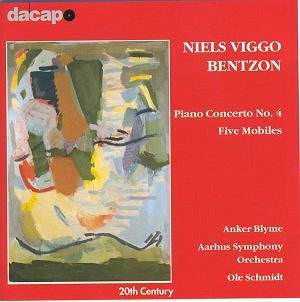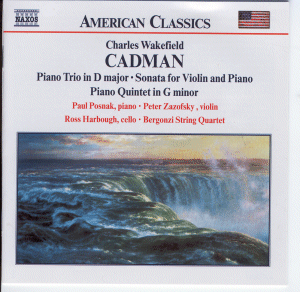 Composer: I Fagiolini
Composer: I Fagiolini
Works: Nicolas Gombert – J’ay mis mon cuer; Mateo da Flecha – La Bomba (excerpt); Sigismondo d’India – Dispieta pietate; Claudio Monteverdi – Vago augeletto; Anonymous – Hey trolly loly lo; Clément Janequin – La Chasse (part 2); Don Fernando de los Infantados – Loquebantur variis linguis; Monteverdi – Audi coelum; Henry Purcell – Sweeter than roses; J.S. Bach – Singet dem Herrn (3rd mvt); Claude Debussy – Dieu! qu’il la fait bon regarder; Benjamin Britten – A death; Trad. arr. Tippett – Early one morning; Roderick Williams – Is 5 (sonnet no.2); William Brooks – Nellie was a lady; Sondheim arr. Williams – Losing my mind
Performers: I Fagiolini; Robert Hollingworth (director); Elizabeth Kenny (theorbo); David Burchell (harpsichord/organ); Fiona Duncan, Timothy Cronin (baroque violins); David Clasen (baritone)
Recording: Recorded at the church of St. Silas, Chalk Farm, London, February 5-6, 1994
Label: Metronome MET 1004-01
I Fagiolini, a name that evokes both curiosity and high expectations, presents an eclectic program with their album “Insalata.” The ensemble, under the astute direction of Robert Hollingworth, showcases a breadth of repertoire that spans centuries, from the intricate polyphony of Gombert and the jubilant rhythms of Janequin to the contemporary musings of Roderick Williams and William Brooks. The title “Insalata,” Italian for salad, aptly reflects the diverse stylistic ingredients that the ensemble deftly combines, resulting in a feast for the ears that calls into question the need for a singular focus in choral music.
The recording opens with Gombert’s “J’ay mis mon cuer,” a work that exemplifies the lush polyphonic textures characteristic of the early Renaissance. I Fagiolini’s execution is marked by a meticulous attention to phrasing and dynamics, allowing the intricate counterpoint to unfold with clarity and emotional depth. Each voice part is discernible yet seamlessly integrated, a feat that showcases both individual artistry and collective coherence. The ensemble’s ability to navigate the dissonances of Sigismondo d’India’s “Dispieta pietate” further highlights their technical prowess, with a delicate balance between tension and resolution that draws the listener into the emotional core of the work.
The humor that permeates the recording is particularly evident in the raucous “Hey trolly loly lo,” which is delivered with a delightful combination of cheeky exuberance and theatricality. This kind of interpretative choice – to embrace the playful elements of the repertoire – is commendable and serves to enliven the performance. Janequin’s “La Chasse,” with its vivid word-painting, is another standout moment, as the ensemble brings to life the hunt with rhythmic vitality and characterful vocal color, painting aural images that resonate with both historical authenticity and contemporary relevance.
Recording quality plays a crucial role in the overall impact of this album. The acoustics of St. Silas Church lend a warm spaciousness to the sound that enhances the clarity of individual voices while maintaining a cohesive blend. The natural reverb complements the lush harmonies, allowing the listener to fully appreciate the interplay of lines without any undue muddiness. The engineering decisions made here respect the integrity of the ensemble’s sound, avoiding the pitfalls of overly close miking that can strip away the communal spirit of choral singing.
One cannot overlook the inclusion of contemporary pieces, which function as bridges between the historical repertoire and modern sensibilities. Roderick Williams’s “Is 5 (sonnet no.2)” and William Brooks’s “Nellie was a lady” are expertly woven into the fabric of the program, showcasing the ensemble’s versatility. Williams’s work, with its amusing descriptive touches, is a playful nod to the traditions of word painting, while Brooks’s piece offers a more complex harmonic language that challenges the singers and engages the audience in a fresh dialogue with the genre.
The album culminates in a stunning rendition of Sondheim’s “Losing my Mind,” arranged by Williams. This track not only showcases the exquisite blend of I Fagiolini’s voices but also serves as a testament to the ensemble’s modern sensibilities. The lush harmonies and emotional nuance present in this interpretation could easily stand alongside the most celebrated performances in the world of choral music today.
This recording represents a remarkable achievement for I Fagiolini, blending historical depth with a contemporary edge that appeals to a wide range of listeners. The ensemble’s technical skill, interpretative insight, and the high quality of the recording come together to create a disc that is as pleasurable as it is intellectually stimulating. For those who appreciate the art of ensemble singing, “Insalata” is a sumptuous offering that invites repeated listening and contemplation.



